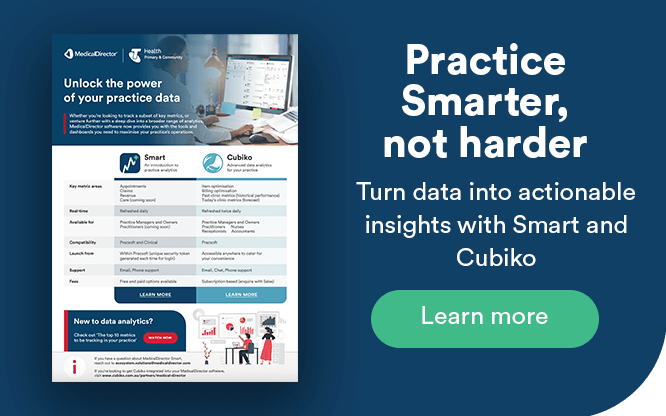What practices need to know about PIP QI
Since PIP QI started in August 2019, there has been some confusion about how it works and what is required for practices, especially when it comes to the data set that needs to be provided. We’ve put together a quick guide to PIP QI for practices to help shed some light on the program and what you need to do to be eligible.
What is PIP QI?
PIP QI stands for Practice Incentive Program Quality Improvement. The aim of this program is to keep the government across population health trends and encourage practices to deliver high-quality care that will lead to improved patient outcomes.
PIP QI offers an incentive payment made to practices that participate in quality improvement activities. You need to do two things to qualify for the payment:
- Participate in continuous quality improvement
- Provide de-identified aggregated data to your PHN.
On completion of both parts, practices will receive up to $12,500 per quarter or $50,000 per year, depending on size. To satisfy the data provision requirement, practices need to provide their PHN with the PIP Eligible Data Set (a set of 10 improvement measures) aggregated for their practice.
You can find more information on the PIP QI here.
What data is needed for eligibility?
There are 10 sets of data required for the PIP QI, derived from clinical and pathology measurements.
To address confusion around the requirements, earlier this year the Department of Health engaged an independent third-party management consultancy to conduct a review. This resulted in the development of the Practice Incentives Program Quality Improvement Measures User Guide.
The PIP QI eligible data set consists of de-identified patient data, aggregated at the practice level with particular splits required with respect to patient demographics.
How is the data used?
PHNs will share the de-identified aggregated data with the Australian Institute of Health and Welfare (AIHW), for national-level analysis and research.
Researchers may apply to access the data securely and in accordance with data access and release protocols, which will be developed in accordance with the PIP Eligible Data Set Data Governance Framework.
How can I submit my PIP Eligible Dataset?
As part of our mission to enable ideal healthcare, MedicalDirector is here to support practices to more easily meet the requirements of the PIP QI. We are working with the DoH, MSIA and the broader industry to ensure consistency in specifications and filetype across software vendors for the PIP Eligible Dataset. Once the specifications are finalised, we will provide you with the information required to access your PIP Eligible Dataset directly from your MedicalDirector software. The PIP Eligible Dataset will be calculated and aggregated as per the PIP user guide above.
Once you’ve accessed the dataset, you will need to work with your PHN to provide it to them using their prescribed tool. This means you may need to upload the dataset into a portal hosted by either the PHN or a third party. We recommend you have an appropriate agreement in place with your PHN with respect to the transfer of the PIP Eligible Dataset and that this agreement takes into consideration and reflects the outcomes of the third–party review.
What if my practice has already entered into a separate data-sharing agreement with my PHN?
If you have chosen to provide patient-level data to your PHN via a separate data-sharing agreement for purposes other than PIP QI, the third-party involved in extracting this data may perform the requisite aggregation and submit the PIP QI Eligible Dataset to your PHN on your behalf. Please note, separate data-sharing agreements involving third-party data extraction and patient-level data are not necessary to satisfy the requirements of PIP QI.










